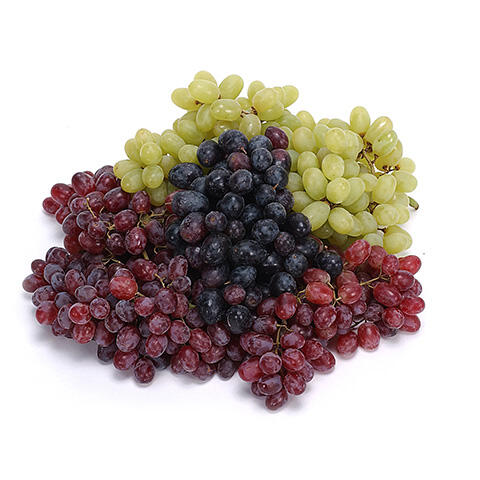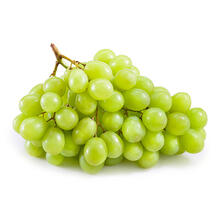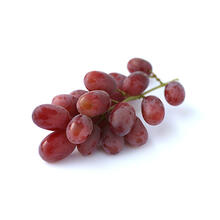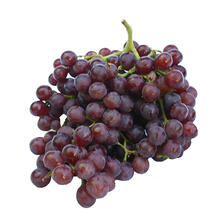You are here
General Produce
Grapes

5-, 10-, 16-, 18-, 21-, 24-, 25-, and 36-lb. cartons
Grape bunches should be well-colored with plump berries firmly attached to green pliable stems. Grapes should be consistent with the color and shape of the particular variety.
Short-term storage recommendation (7 days or less)
- 34-36° F/1-2° C
- 90-95% relative humidity
Maintain adequate air circulation during storage. Keep grapes away from
ethylene-producing fruits and ripening rooms.
Shatter: Detachment of berries from the cluster is called shatter. Shatter increases with rough or excessive handling. Shatter can be reduced by gentle handling and maintaining recommended temperature and relative humidity levels.
Moisture: Never wash grapes in preparation for the display. The natural protective layer created by the grapes, called bloom, will be removed. This allows for dehydration or water loss to occur. Once the bloom is removed, it dramatically increases the grape’s susceptibility to mold and decay.
Air Circulation: Grape lugs should be kept away from air blasts. Moving air has a drying effect on grapes. The rate of drying is directly related to the velocity of air.
Odor Sensitivity: Never store odorous products with grapes; they absorb odors.
- Press red and green seedless grapes into foccaccia bread dough; top with rosemary sprigs and bake.
- Toss baby spinach with red grapes, crumbled blue cheese, and slivered almonds; dress with sherry vinaigrette.
Major production areas include California and Chile.






